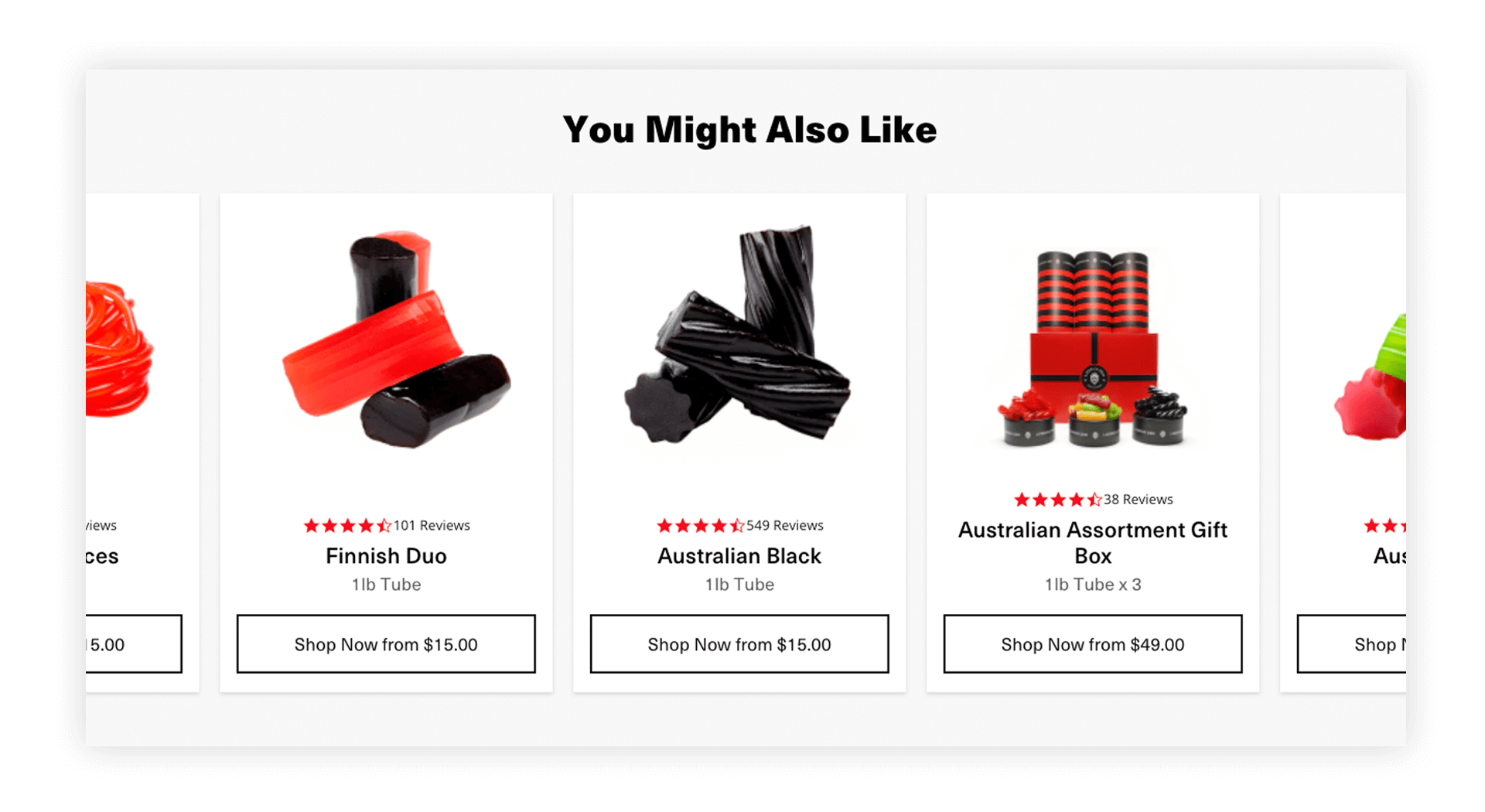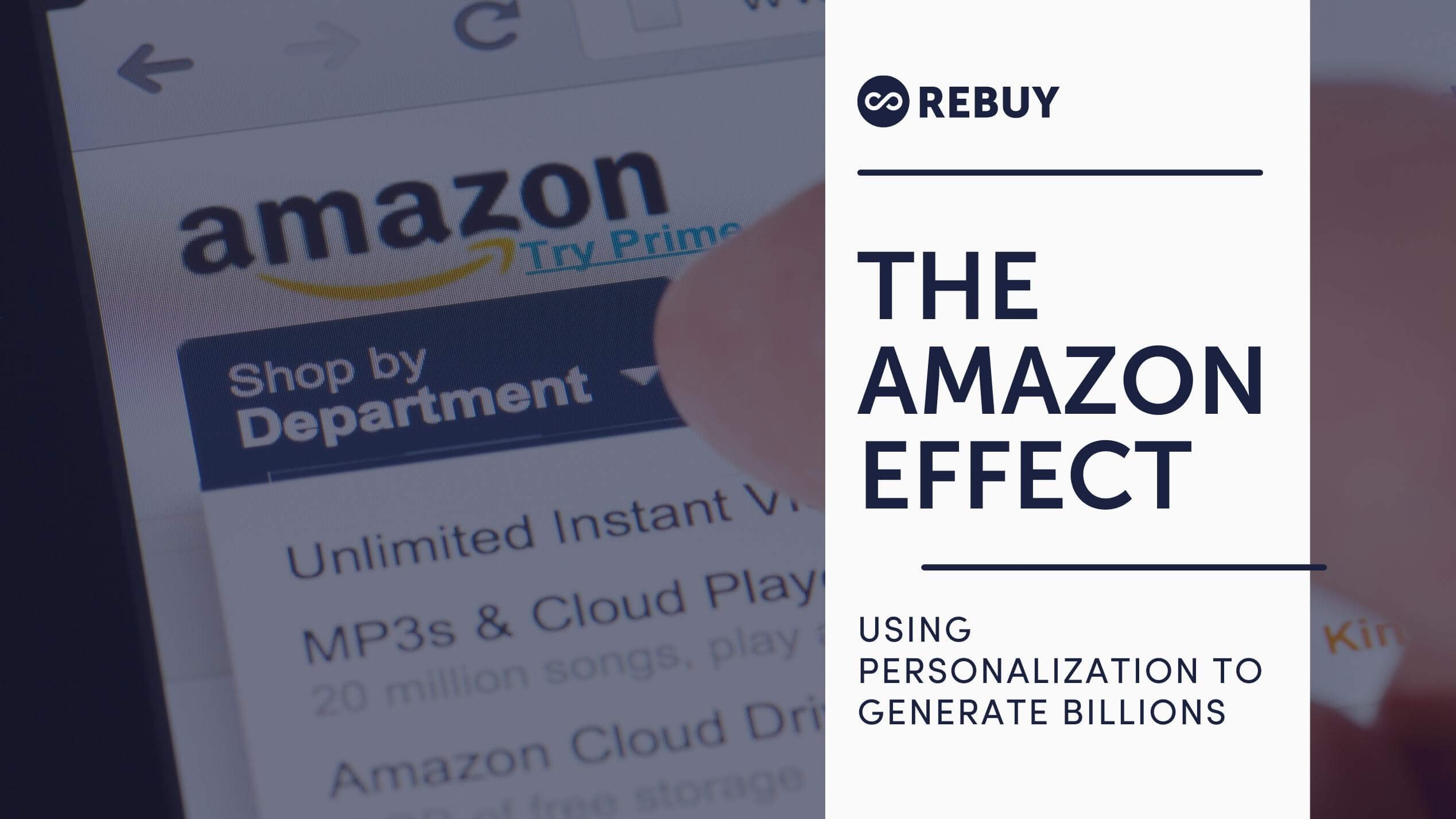Amazon is largely accepted as the leader in ecommerce and it’s not difficult to see why. 2021 brought the company a 22% increase in net sales which translates to $469.8 billion. The massive revenue the shopping platform sees year after year is just one of the reasons why it’s considered to be the most successful online shopping center in the world.
So how do they do it? What enabled Amazon to break through the dozens of other online shopping platforms and claim the throne?
The answer: Personalization.
Amazon is considered to be the pioneer of personalization in ecommerce. Their efforts began in 2010 when they introduced the ‘Customers Who Bought’ widget which recommended additional products to shoppers based on their shopping preferences. This gave them a huge competitive advantage back then and is still doing wonders for the company today. In fact, nearly 35% of Amazon’s sales come directly from personalization efforts and 56% of these shoppers are more likely to be repeat buyers.
And they’re not stopping there. Amazon has introduced dozens of personalization features powered by artificial intelligence (AI), machine learning, big data, predictive analytics, and more—all of which are enabling the company to generate massive revenue.
Here’s how they’re doing it.

Using AI and Machine Learning to Better Understand Consumers
Take a look at your own Amazon account. It’s likely that your homepage is populated with things that you’re interested in. And it changes each time you log in, always showing you something new. But how does it do that? Deep learning.
A subset of AI and machine learning, deep learning essentially uses data and algorithms to understand human behavior and provide results based on that behavior. With Amazon, deep learning helps the platform understand which products or goods a shopper is interested in and then provide recommendations for future purchases based on those interests. So if someone looks at dog food, the platform may recommend dog leashes or dog toys as well.
The platform is able to personalize these results via AI and deep learning as it scans and learns from the products someone looks at, the pages they visit, reviews they’ve left, ratings they’ve given, and their previous purchases.
Treating Customers As Individuals
Something that Amazon does really well is tailoring content to individual users. For example, every time you log in to your Amazon account, you’re greeted with a homepage filled with new products to consider or items that pair well with something you’ve just purchased. And these changes aren’t just a one-time thing—they shift accordingly to align with your buying habits.
And so, the platform carefully and rigorously gathers data about each individual user as they browse around, learning what they like and what they don’t so it can provide more personalized product recommendations. This data is seamlessly incorporated into the user experience. This results in a website that actively listens and responds to customers' changing needs.
The One-Click Checkout
Amazon knows it has stiff competition. There are literally dozens of retailers out there who may be offering a less expensive or better product, so they needed something to help them stand out from the crowd. This is why they implemented one-click checkout which allows users to buy a product without having to enter their billing and shipping information multiple times.

The most obvious advantage of this feature is convenience. In fact, shopping carts are abandoned 70% of the time and 18% of shoppers abandon their purchase simply because the checkout experience is too long. Amazon ensures it doesn’t miss out on potential sales by providing a fast, easy checkout experience. And by capitalizing on the ‘buy now’ mentality of today’s shoppers, they’re able to boost sales even more.
Special Delivery
In addition to being known for its personalization, Amazon is also known for its rapid delivery times. Their licensed anticipatory delivery model utilizes customer data to predict what people are going to buy and when. Those items are then shipped to nearby stockrooms to ensure they’re ready for delivery when ordered.
Offering same-day delivery gives Amazon a number of advantages—particularly around boosting revenue. Customers are far less likely to abandon their carts with a guarantee of next-day or same-day delivery. And it boosts overall customer satisfaction which means they’ll keep coming back for more.
Putting Amazon’s Personalization Tactics to Use
Thanks to Amazon, the personalization pioneer, 80% of customers have come to expect highly personalized shopping experiences. Luckily, retailers looking to leverage the company’s personalization tactics have a myriad of tools available. And these modern tools can help companies do everything from increase conversion rates to improving customer loyalty rates—all of which result in higher revenue.
For example, Licorice.com, a provider of artisanal gourmet licorice, wanted to increase sales. Using personalized product recommendations, they were able to increase average order value (AOV) by 17% literally overnight.

Target utilized data science tools in order to gather customer demographic information and track buying behavior. They were able to use this data to provide customers with more personalized product recommendations and more targeted marketing campaigns.
Spotify utilizes a machine-learning algorithm to analyze and determine listeners’ music tastes. By analyzing their listening behavior and their popular playlists, the platform is able to provide users with a list of new songs in their “Discover Weekly” playlist. It’s those highly-personalized playlists and music selections that have driven more than 150 million people to purchase a Spotify premium account.
Create Personalized Shopping Experiences with Rebuy
From deep learning to conversion rate optimization, there’s nothing Amazon hasn’t explored to strengthen its personalization advantage. Learning from their success and diving deep into the world of personalization can help stores grow exponentially. And it can help you carve out a niche in today’s competitive world of ecommerce.
Rebuy’s personalization platform enables merchants from across industries to deliver the highly-coveted Amazon experience. With tools like AI-powered product recommendations, reporting and analytics, automated retention, and one-click post-purchase offers, Rebuy empowers your online store to easily offer data-driven shopping experiences, win more customers, and generate more revenue.
Believe it!
You don’t have to be Amazon to create personalized shopping experiences that generate record-breaking sales and raving fans. At least, not anymore.
•••
Try Rebuy free and see why the world’s top brands use Rebuy to accelerate sales growth.
To keep up with the latest trends, platform updates, and more, follow us on LinkedIn.
